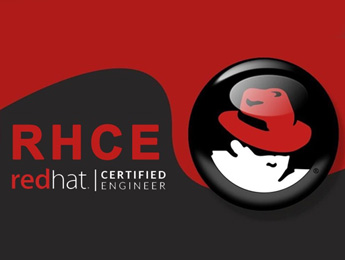Red Hat Certification Training Course – RHCE
Red Hat Certification Training is open-source software and it is utilized by several enterprises. Basically, it is a Linux-based operating system developed for enterprises. Red Hat Certification Training utilizes advanced servers and also it is capable to provide cloud services. Operational costs can be reduced because of cloud services. This is why most industries are utilizing Red Hat and a career in this would give you enormous opportunities. Red Hat Certification Training is an advanced certification in the Red Hat. After completing this course from Kodebro you would be able to handle the network and security on servers that are utilized in a Red Hat operating system.

Red Hat Certification Training Course Overview
Syllabus for Red Hat Certification Training Course
- Access ing the Command Line Using the Loca l Console
- Access ing the Command Line Using the Desktop
- Practice: The GNOME 3 Desktop Environment
- Executing Commands Using the Ba sh Shell
- The Linux File System Hierarchy
- Managing Files Using Command-Line Tools
- Matching File Names Using Path Name Expansion
- Reading Documentation Using man Command
- Reading Documentation Using pi nfo Command
- Redirecting Output to a File or Program
- i/o Redirection and Pipelines
- Editing Text Files from the Shell Prompt
- Editing Text Files with a Graphical Editor
- Users and Groups
- Managing Local User Accounts
- Managing User Passwords
- Access ing the Remote Command Line with SSH
- Configuring SSH Key-based Authentication
- Customizing SSH Service Configuration
- System Log Architectu re
- Reviewing Sys log Files
- Ana lyzing and Storing Logs
- Networking Concepts
- Configuring Networking with nmcli
- Managing Compressed tar Archives
- Copying Files Between Systems Securely
- RPM Software Packages and Yum
- Managing Software Updates with yum
- Identifying File Systems and Devices
- Locating Files on the System
- Kickstart File Syntax and Modification
- Deploying a New Virtual System with Kicksta rt
- Regular Expressions Fundamentals
- Matching Text with grep
- The vim Text Editor
- Basic vim Workflow
- Editing with vim
- Scheduling O ne-Time Tasks with at
- Scheduling Recurring Jobs with cron
- Scheduling System cron Jobs
- Process Priority and ” nice” Concepts
- Using nice and renice to Influence Process Priority
- POSIX Access Control Lists (ACLs)
- Interpret ACLs
- Enabling and Monitoring Security Enhanced Linux (SELinux)
- Troubleshooting SELinux
- Using Ide ntity Management Services
- Mounting Network Storage with NFS
- Automounting Network Storage with N FS
- Accessing Network Storage with SMB
- The Red Hat Enterp rise Linux Boot Process
- Repairing Common Boot Issues
- Repairing File System I ssues at Boot
- Controlling Services with systemctl
- Controlling the Boot Process
- Review of 1 Pv4 Networking Configuration
- IPv6 Networking Configuration
- Configuring Network Teaming
- Configuring Software Bridges
- Port Secu rity
- Managing Firewalld
- Managing Rich Rules
- Masquerading and Port Forwarding
- DNS Concepts
- Configuring a Caching Nameserver
- DNS Troubleshooting
- Configuring Send-only Email Service
- Providing Remote Block Storage
- iSCSI Concepts
- Accessing iSCSI Storage
- Exporting NFS File Systems
- Providing SMB File Shares
- Performing a Multiuser SMB Mount
- Providing File-based Storage
- Installing Maria DB
- Working with MariaDB Databases
- Managing Database Users and Access Rights
- Creating and Restoring MariaDB Backups
- Configuring Apache HTTPD
- Configuring and Troubleshooting Virtual Hosts
- Configuring HTTPS
- Integrating Dynamic Web Content
- Bash Shell Scripting Basics
- Enhancing Bash Shell Scripts with Conditionals and Control Structures
- Linux Containers and Docker
All Categories
Popular Courses
Red Hat Certification Training Course – RHCE Key Features
- Easy Access
- Assignments
Mentors will allocate a few tasks not long after the culmination of every single point that makes you ace in the Google Cloud Information Designer Course and furthermore assists you with researching Cloud Information Specialist Certificate.
- Real-life Case Studies
- Certification
Job Opportunities
- Cloud Support Engineer - Developer & Mobile Services.
- Automation Analyst.
- Amazon - Selling Partner Support Associate
- AWS Team Manager - Trust & Safety
- Cloud Support Associate
Minimum Eligibility – Red Hat Certification Training Course
- Learners who want to learn about basic cloud concepts, AWS Cloud terminology, and AWS core services
- No coding experience required.
- Business leaders and IT-technical professionals
Skills covered
- Cloud Provider Selection
- Application Migration
- Autoscaling
- Cloud Workloads
- Identity Access Management
Top Skills You Will Learn in Red Hat Certification Training
- Define the cloud and how it works
- Explain the benefits of the AWS Cloud
- Gain a deeper understanding of AWS core services
- Describe security services with the AWS Cloud
- Compare the different methods of interacting with AWS
- Identify AWS management services and their use
